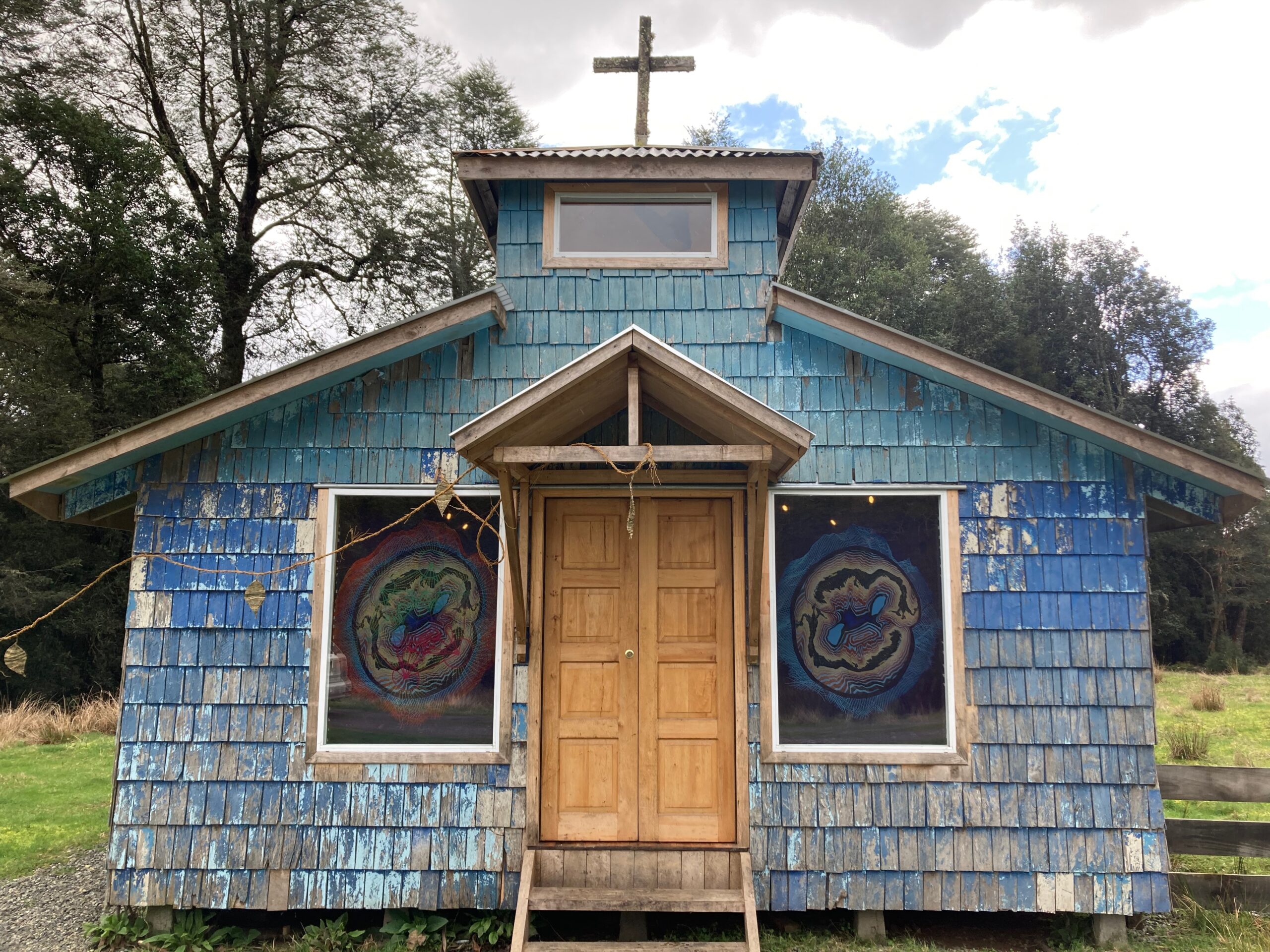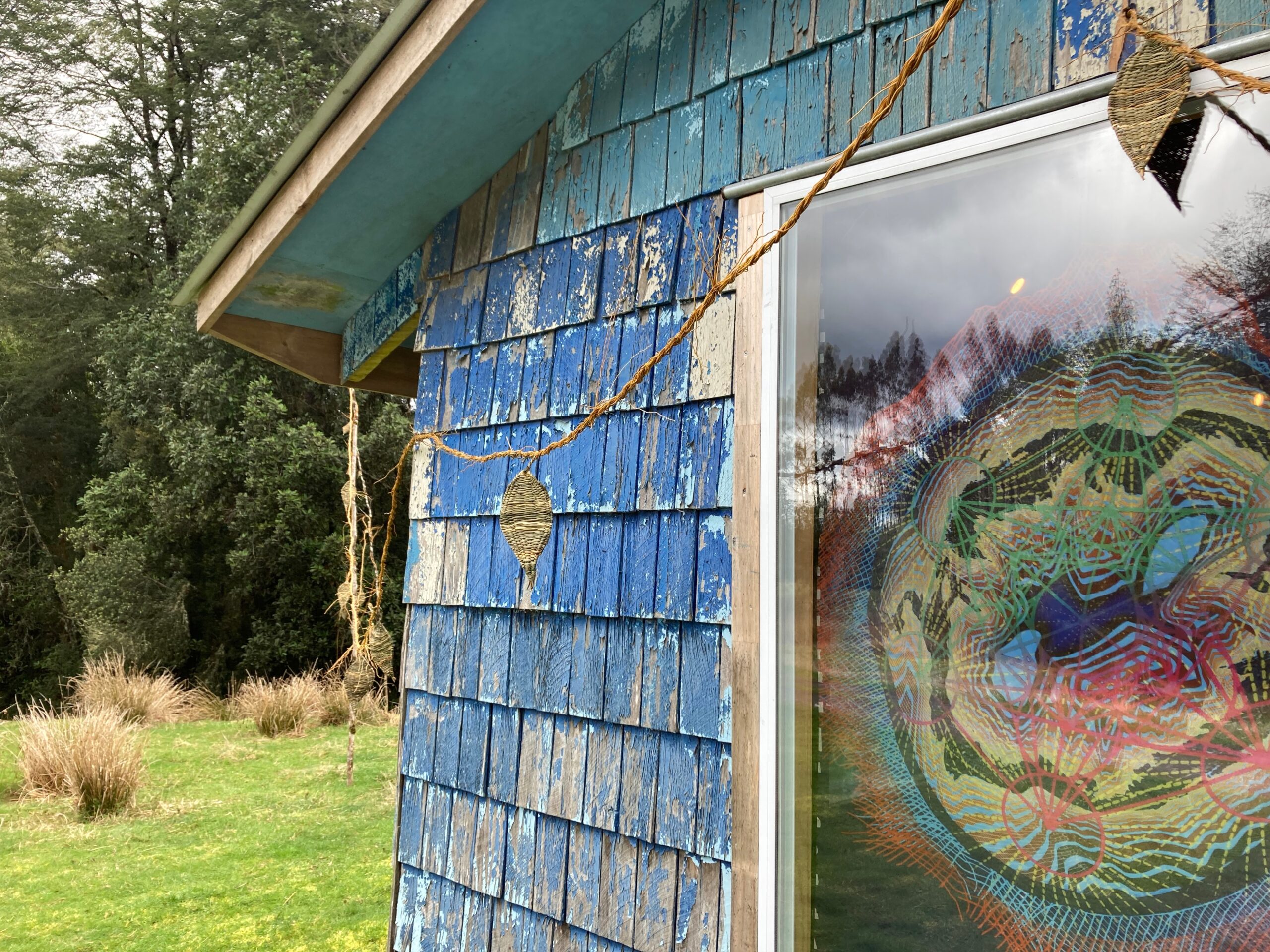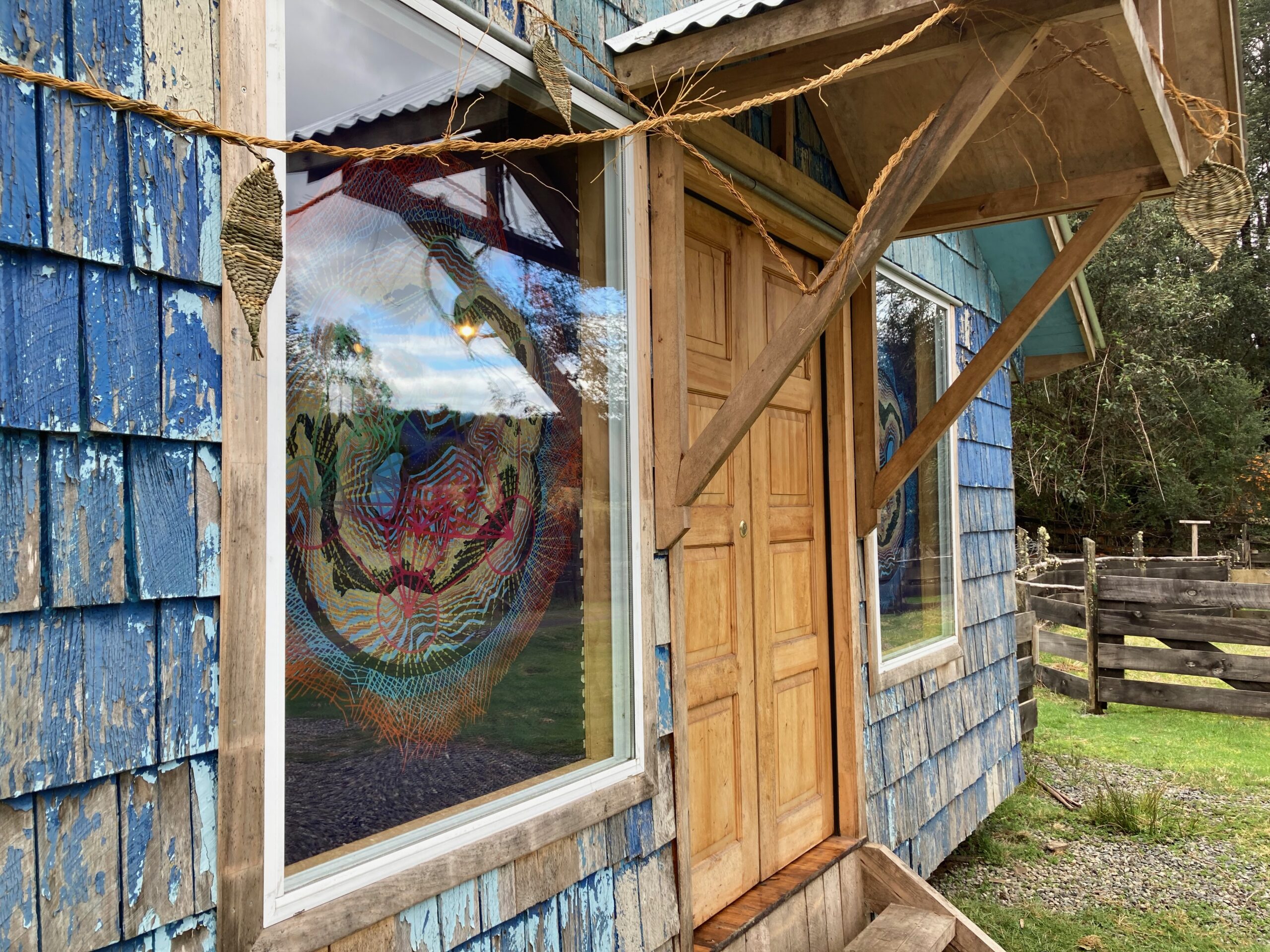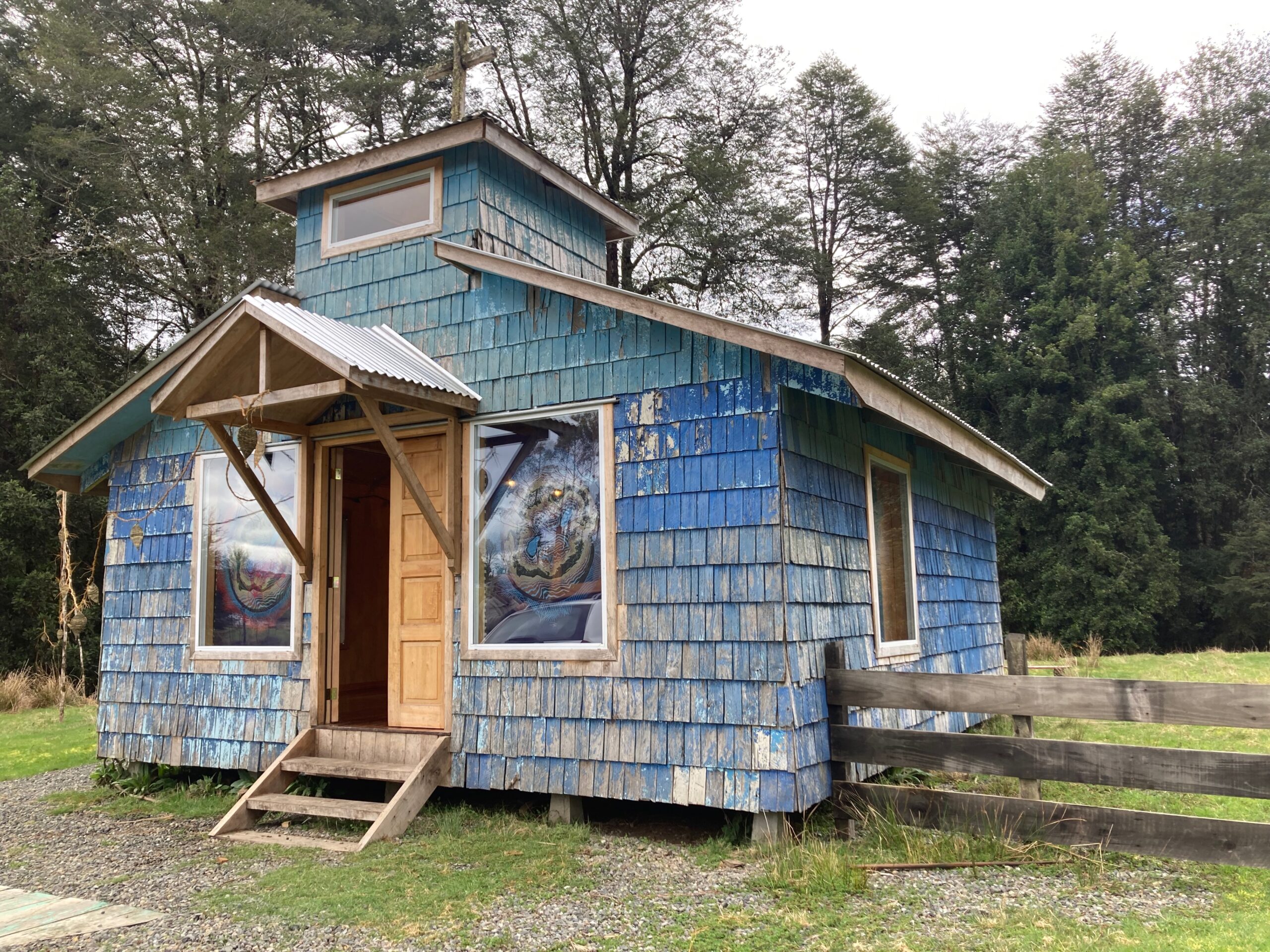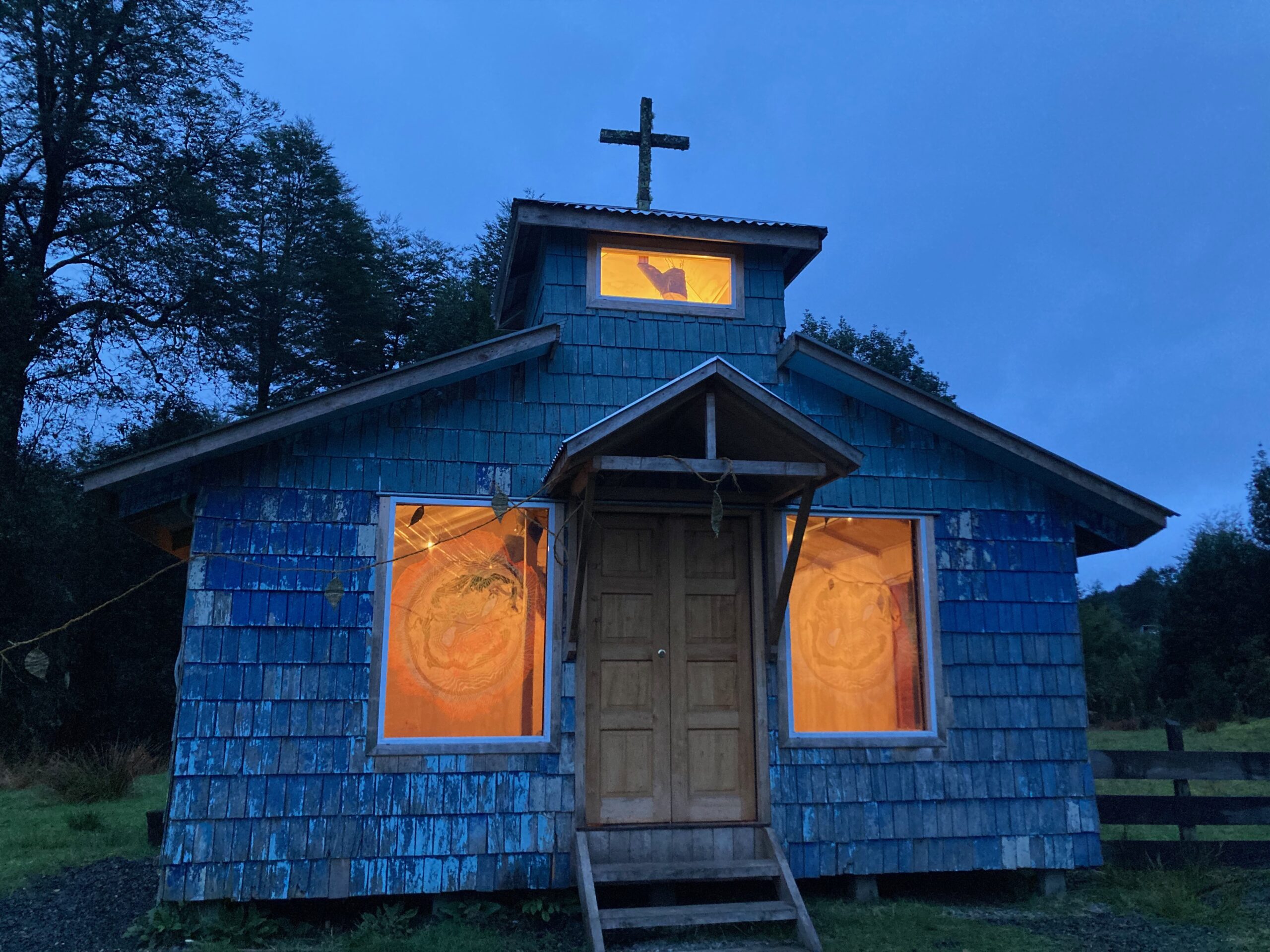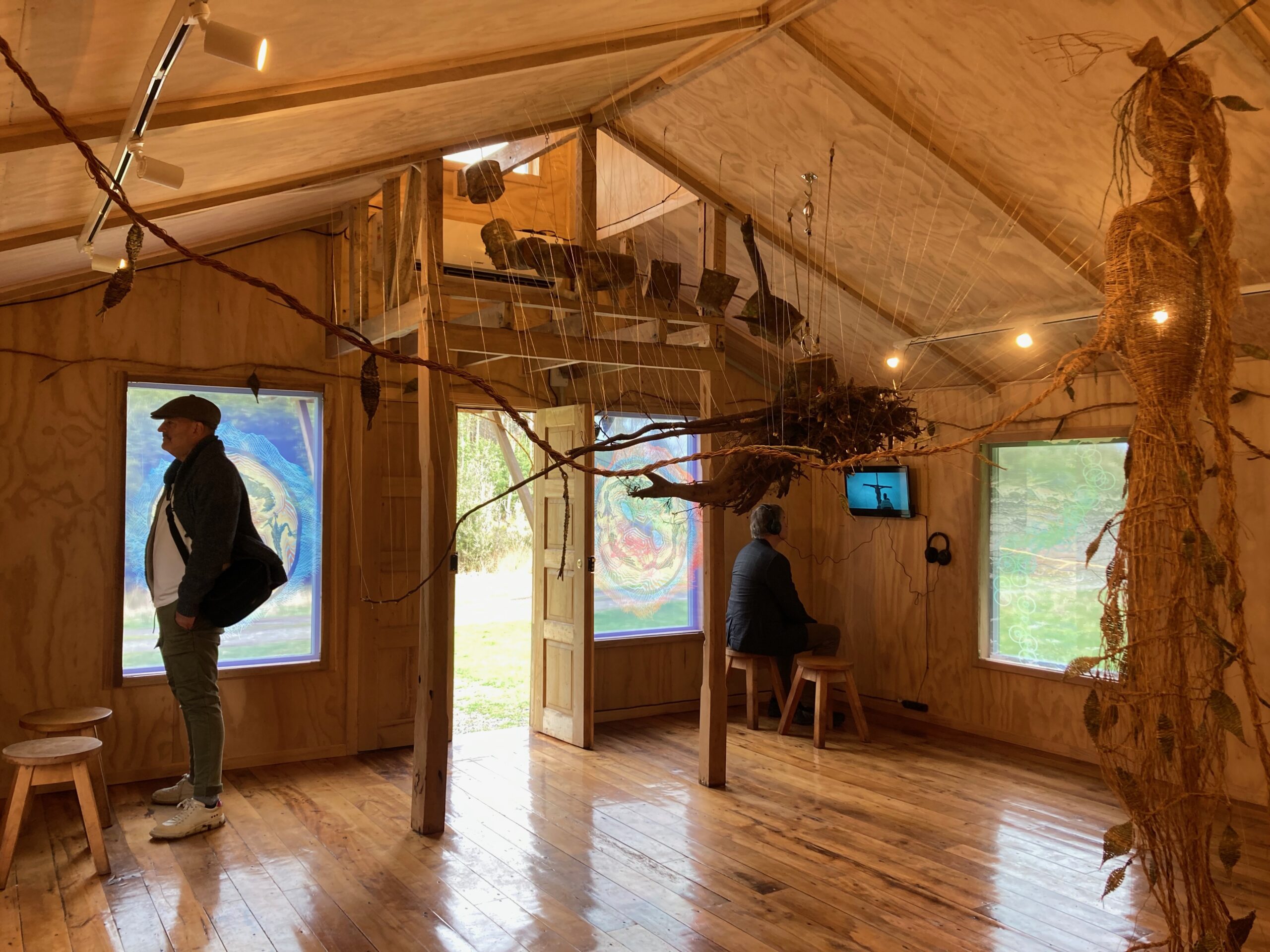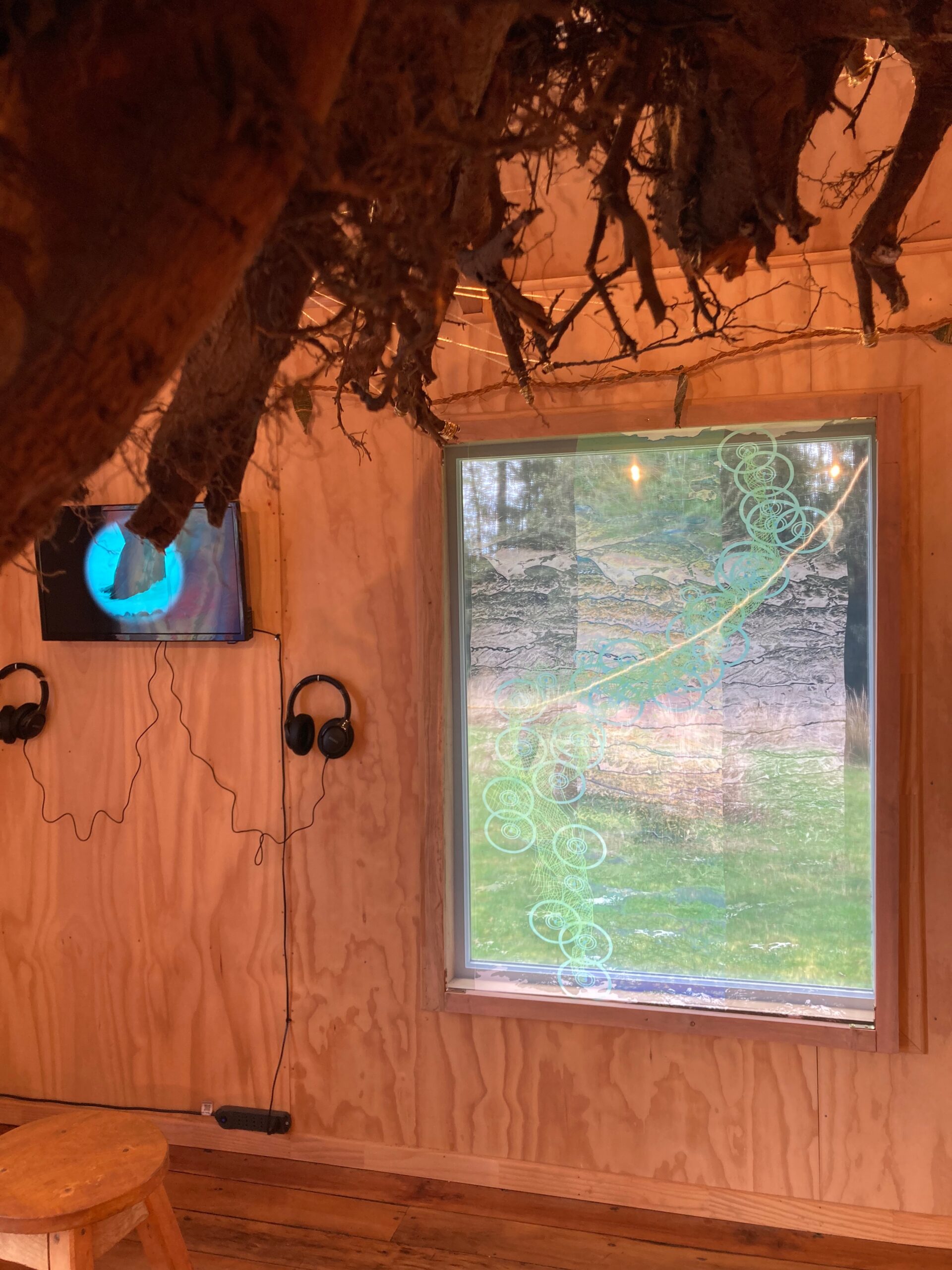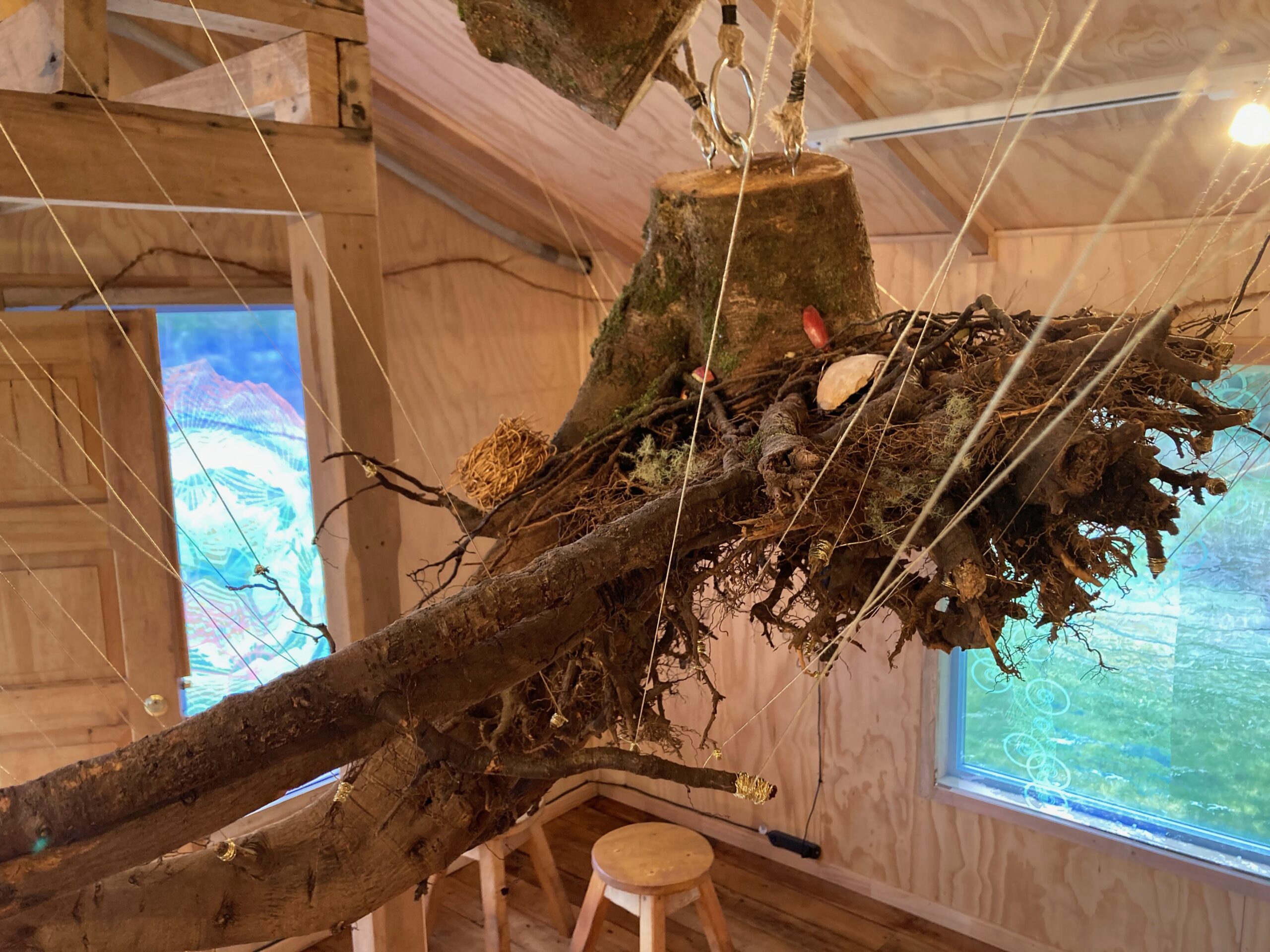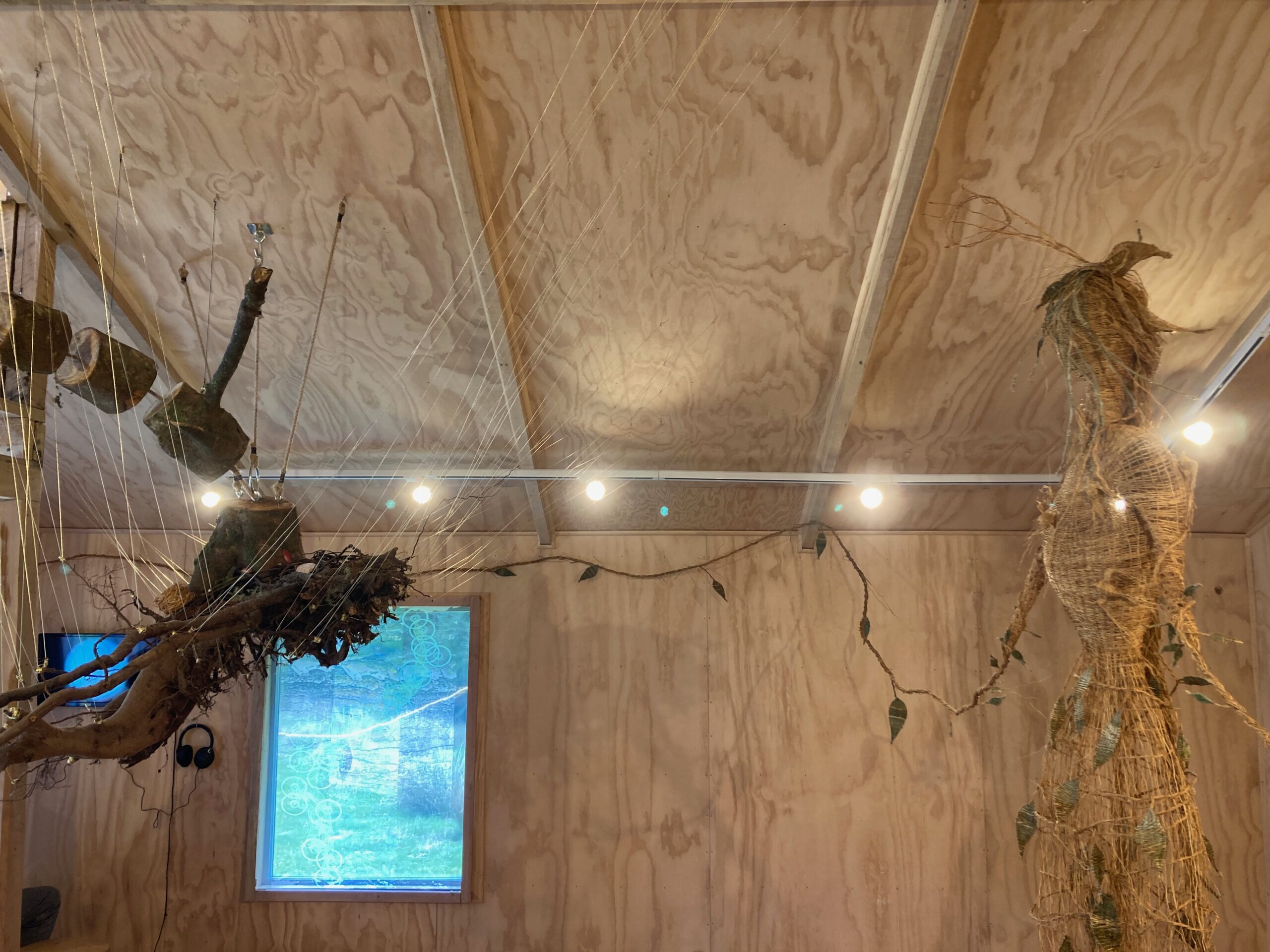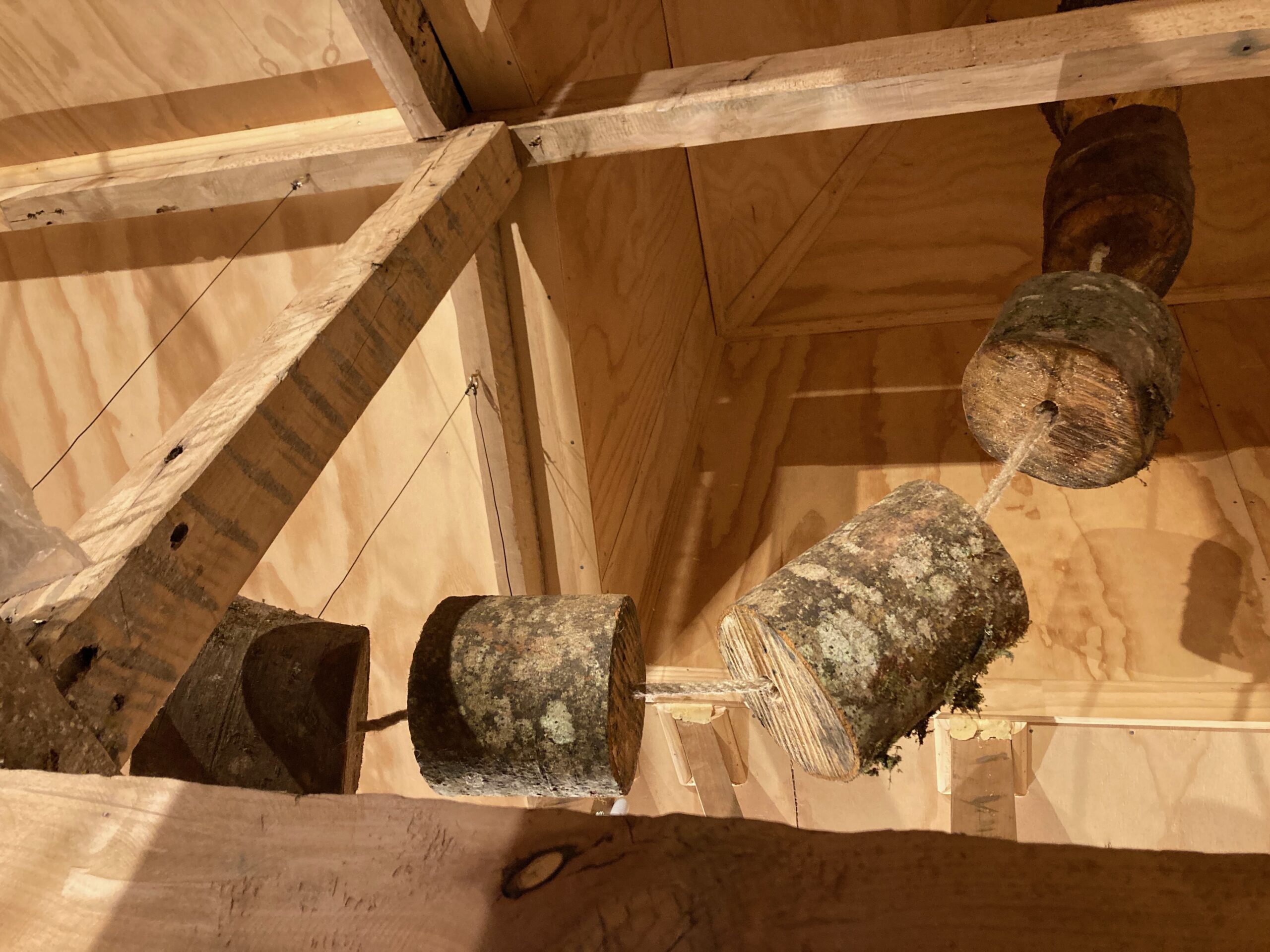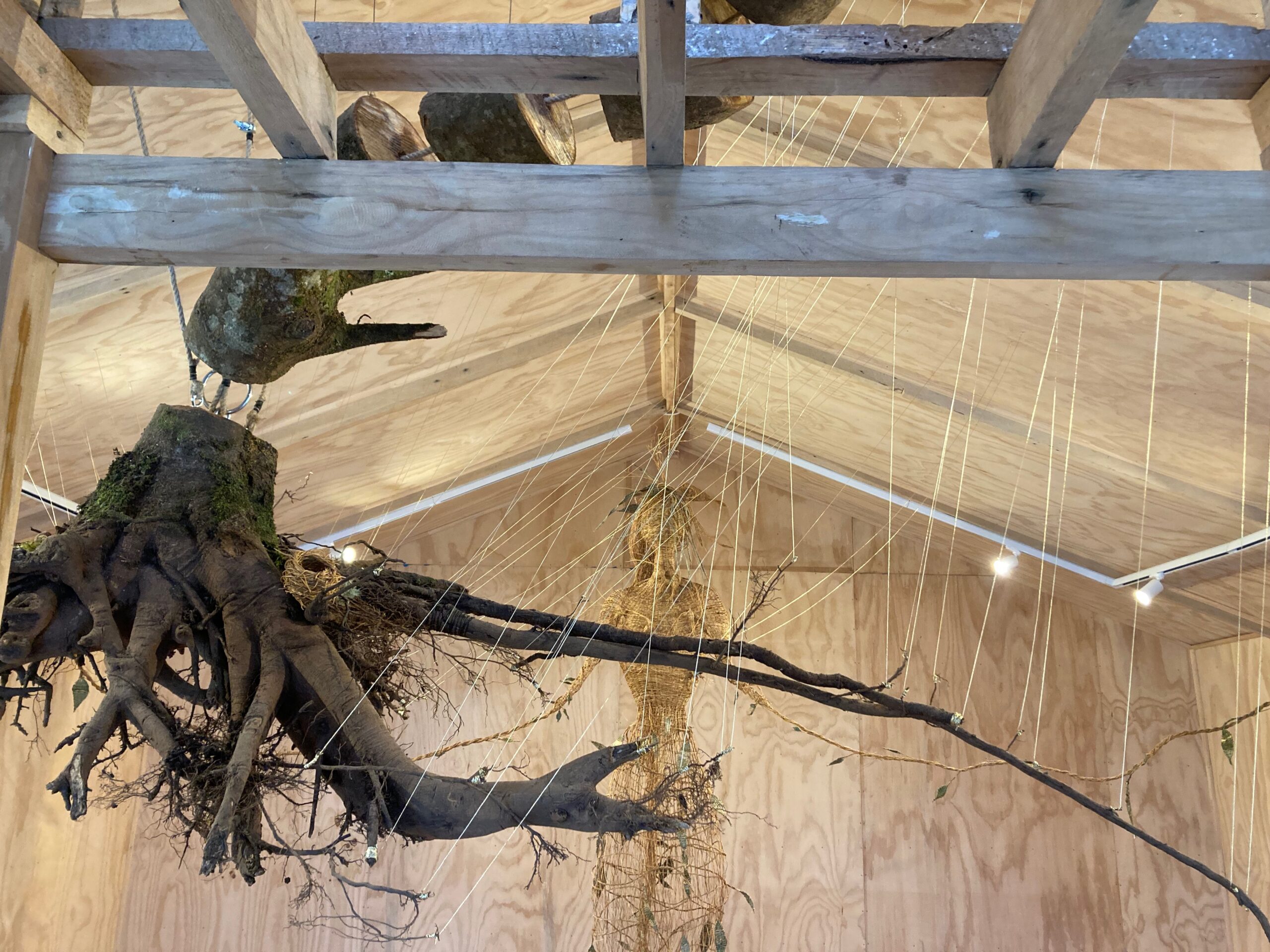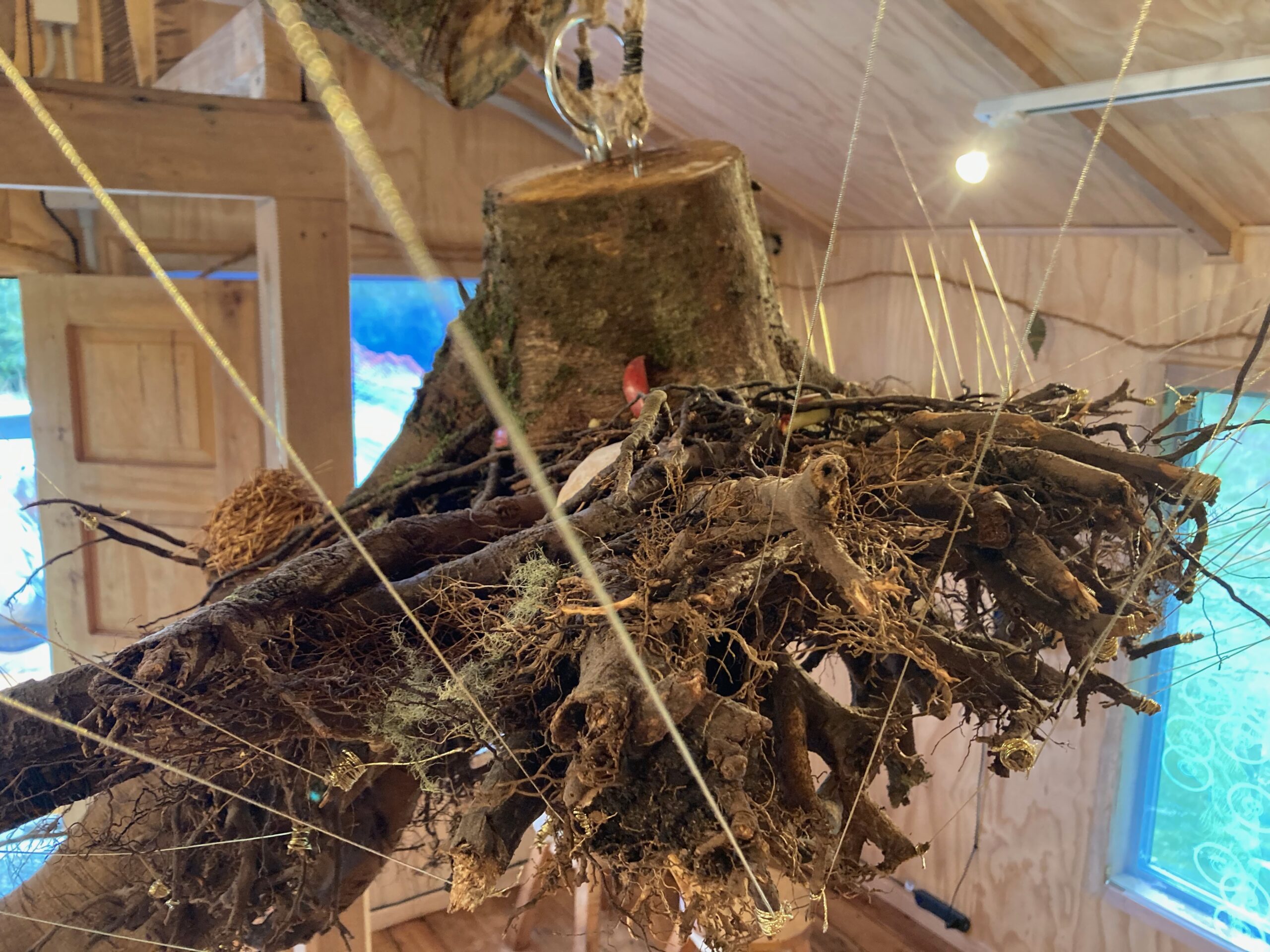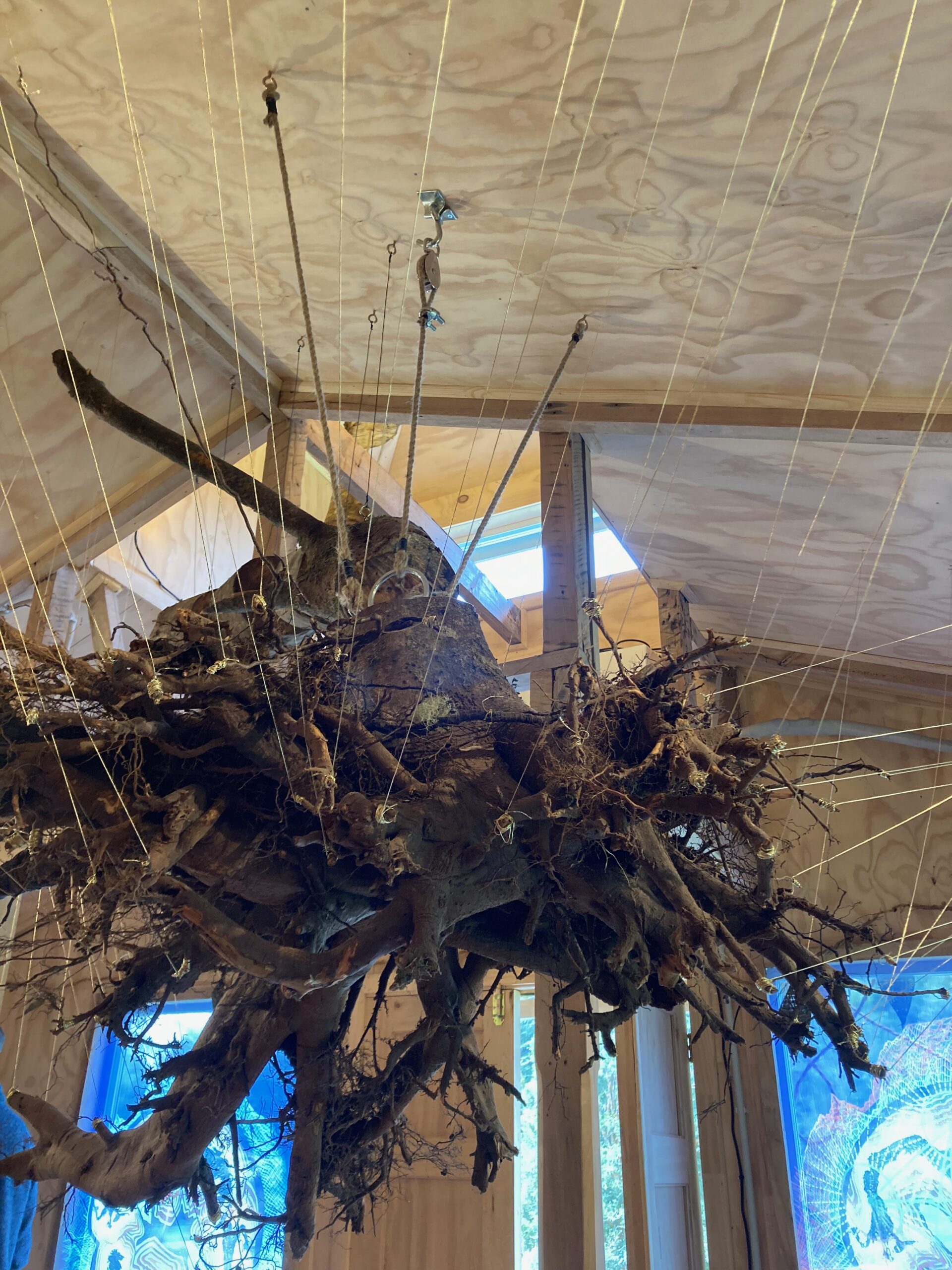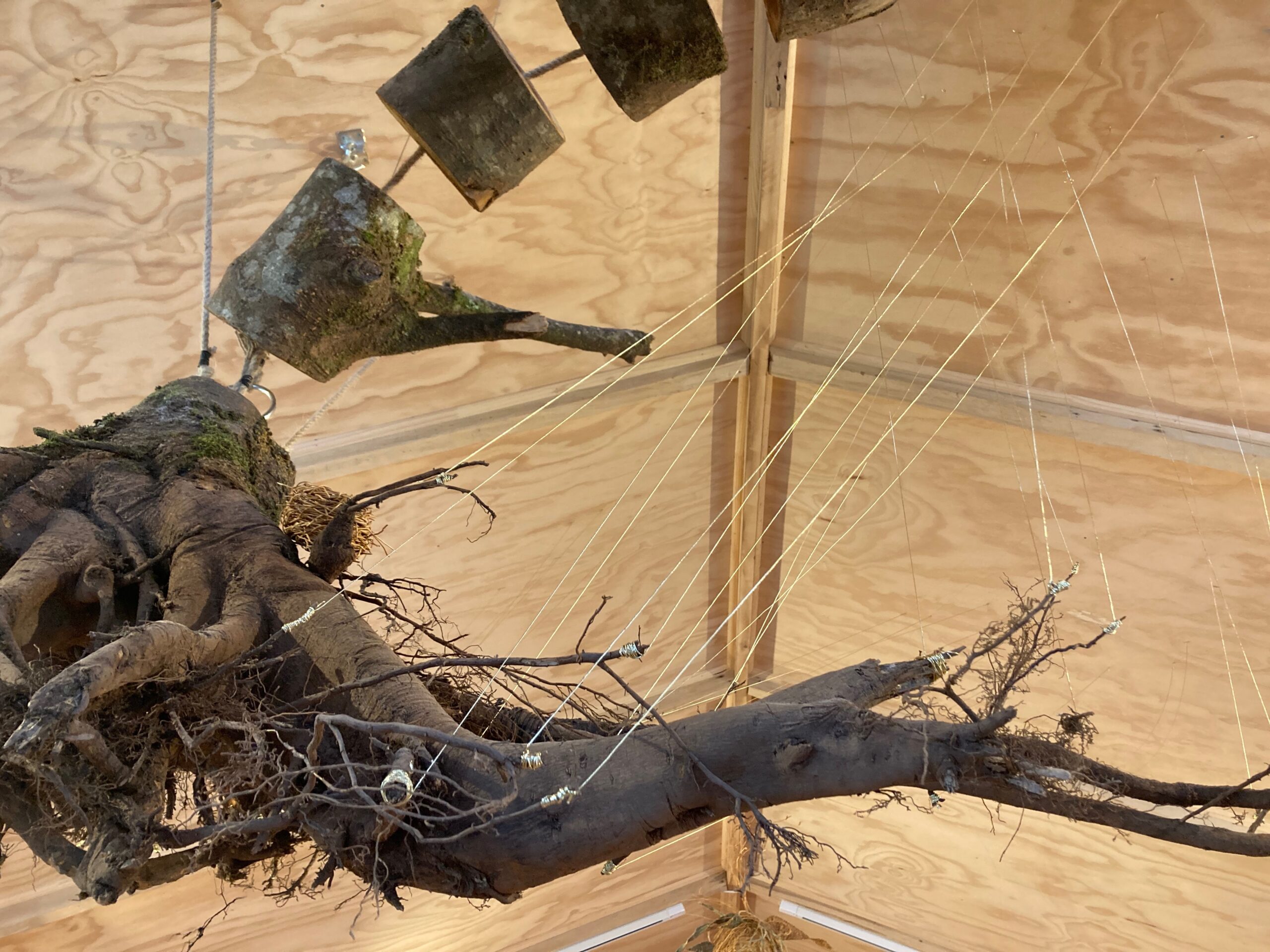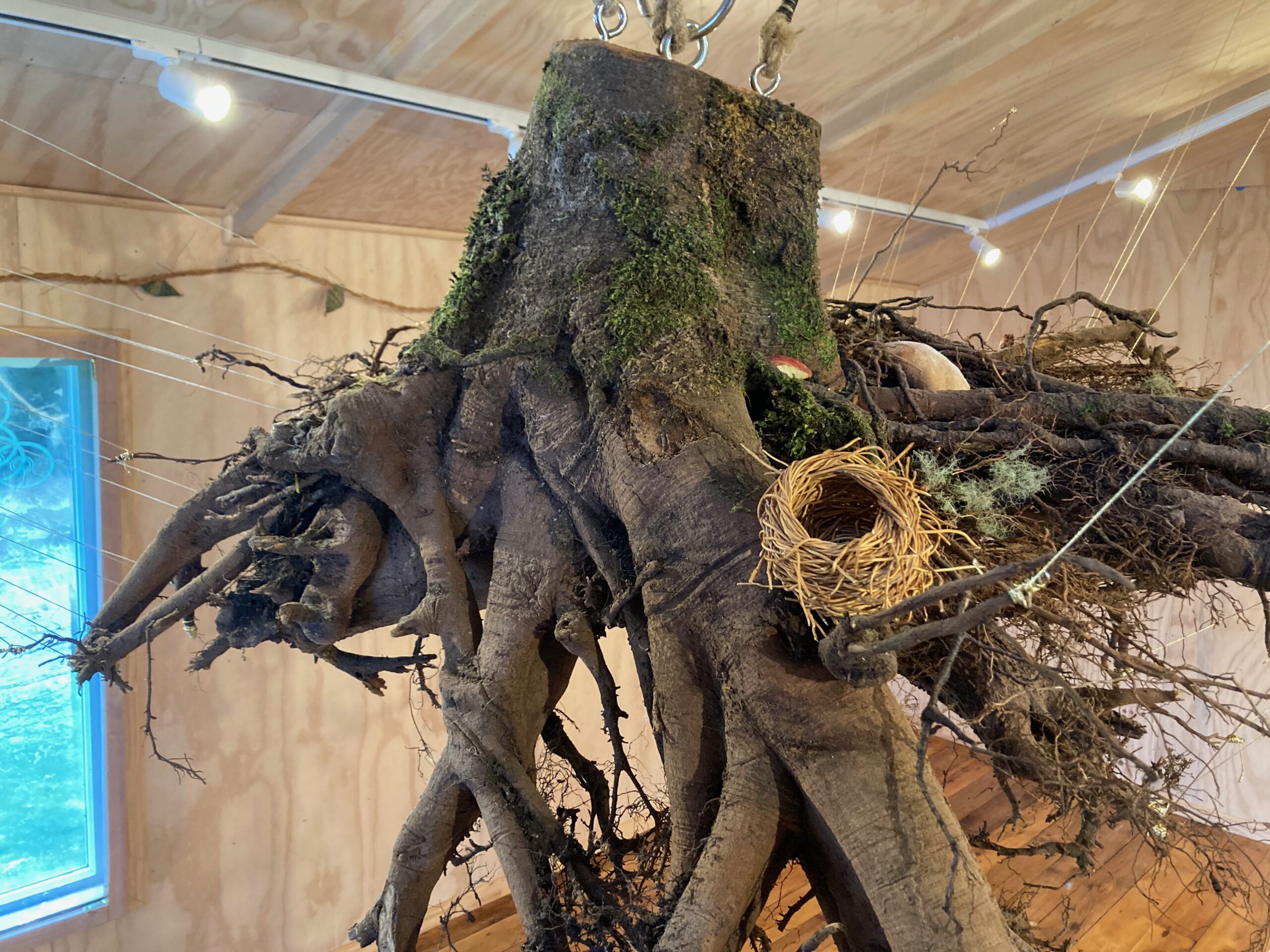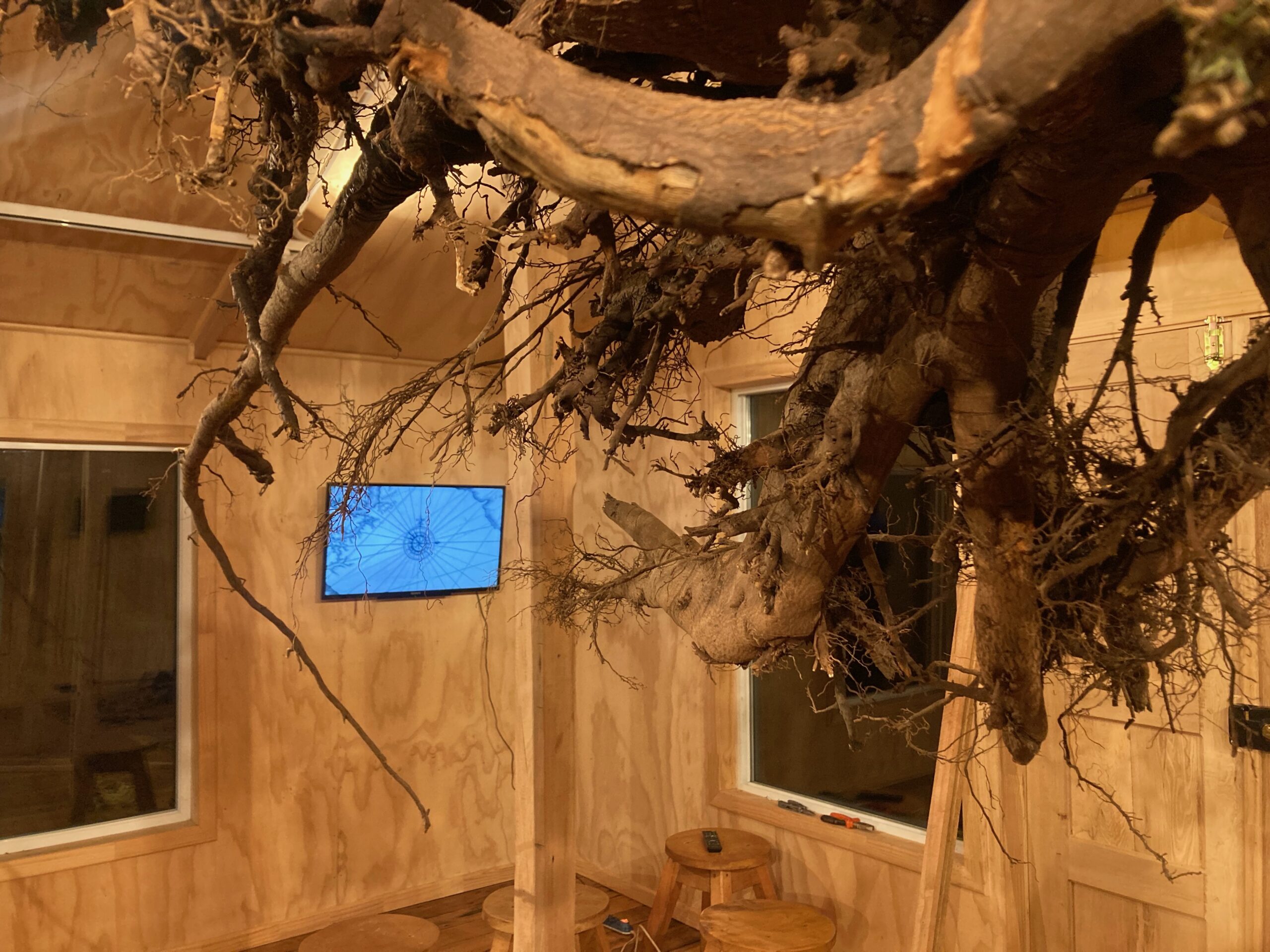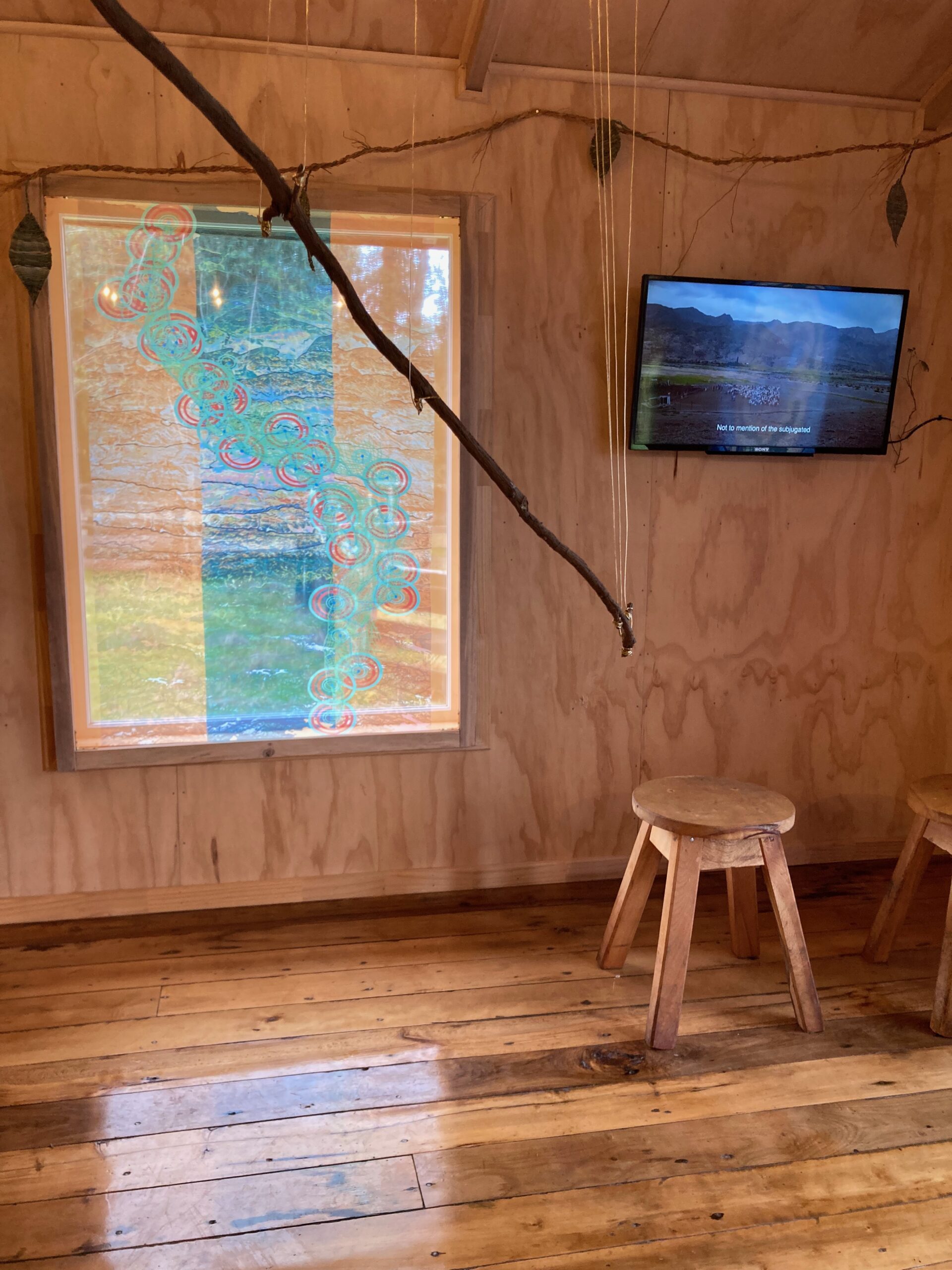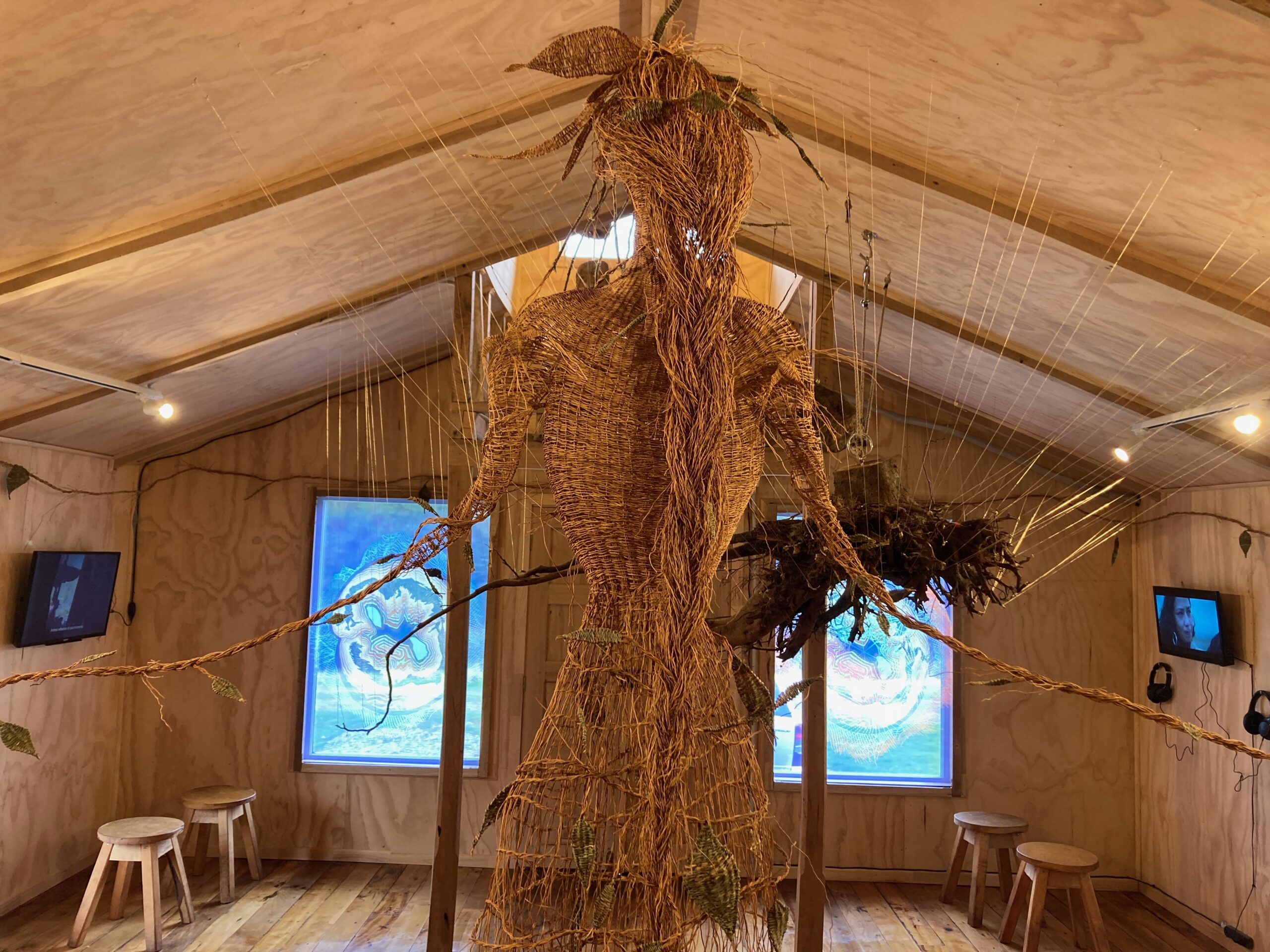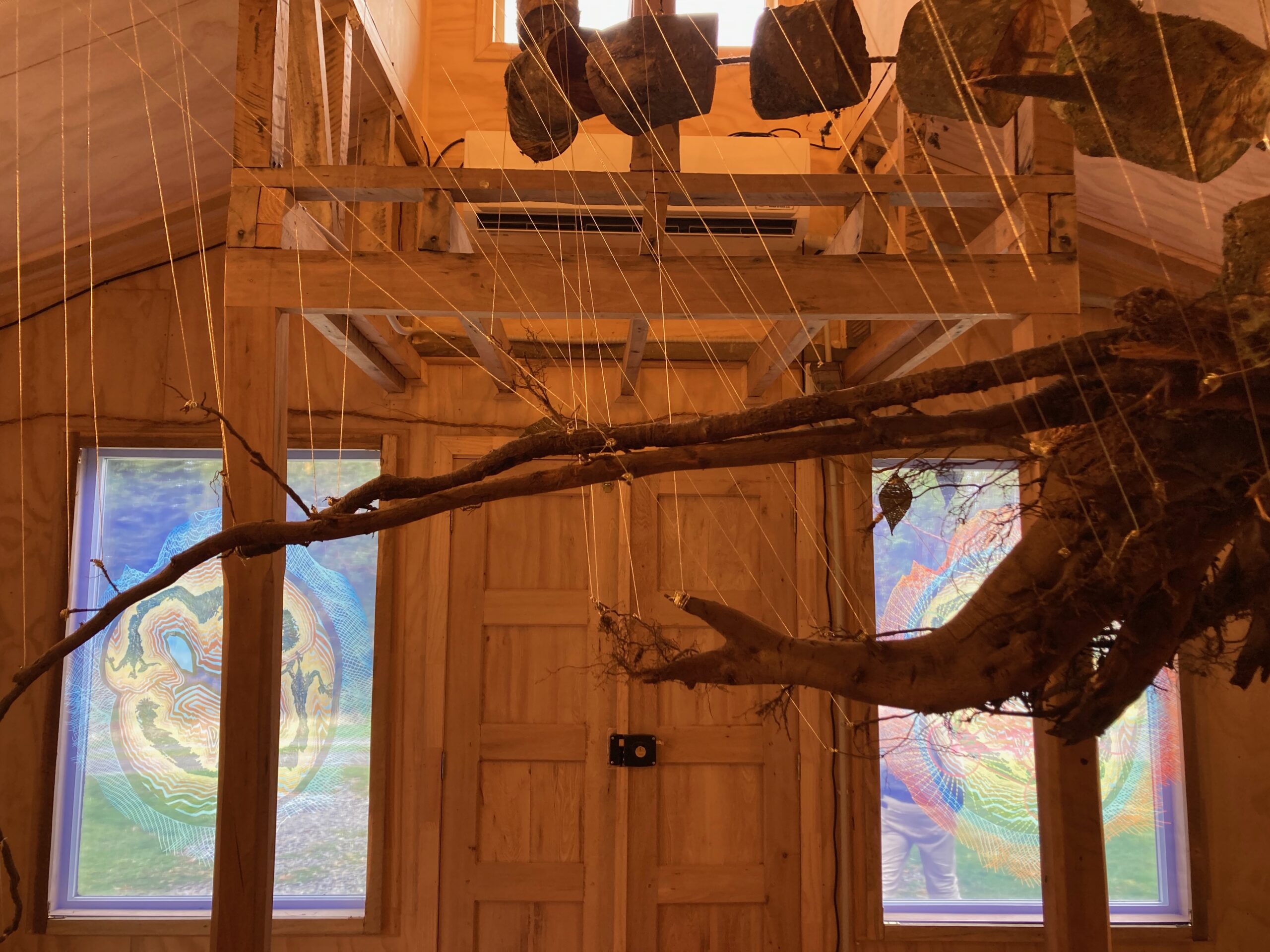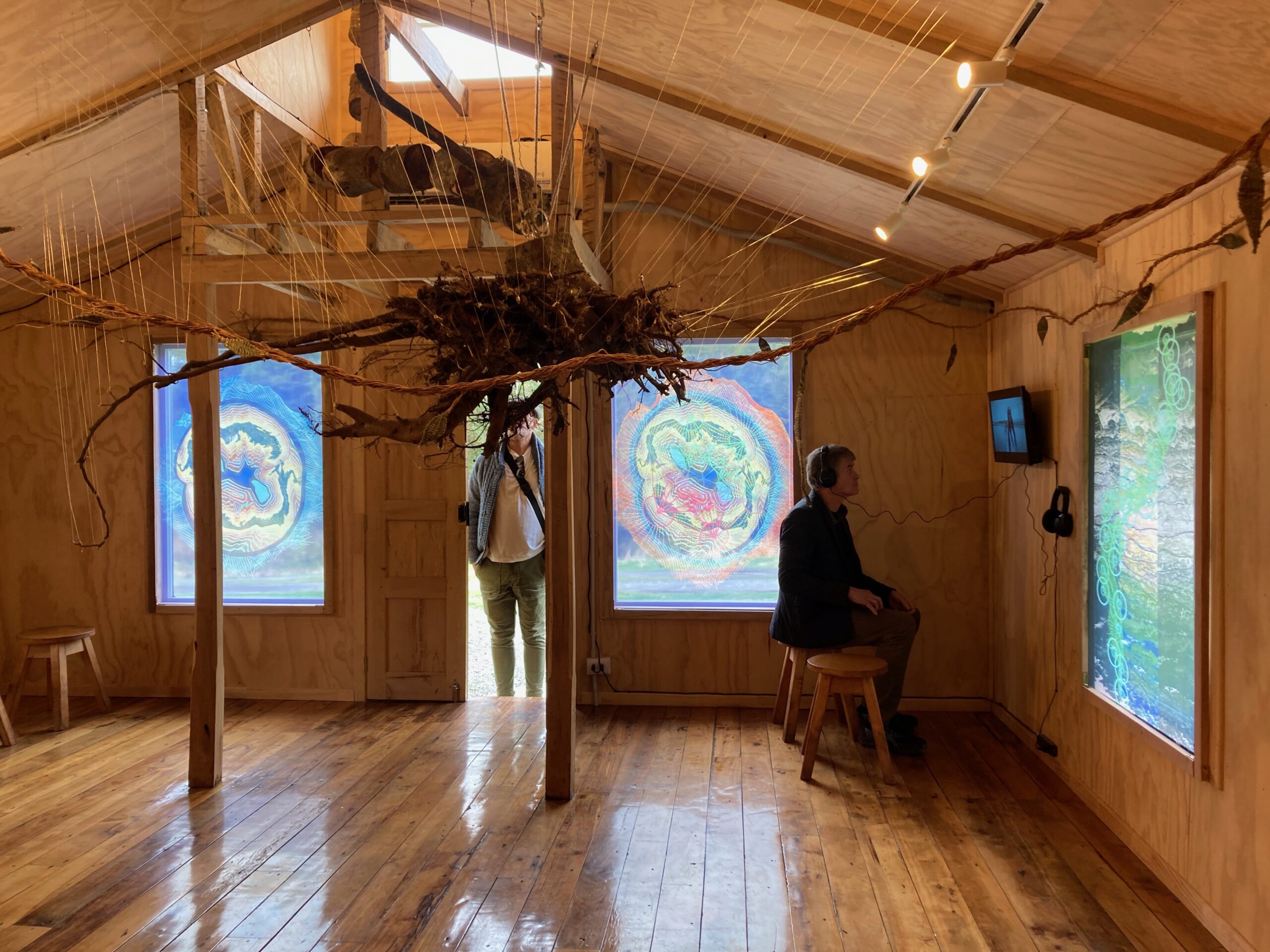
Somos Raíces
Raquel Aguilar Colivoro and Voluspa Jarpa have together created a choreography of poetry and materials, ascending and descending, both inside and outside the Capilla Azul (Blue Chapel). Inside, the forest woman, dressed in leaves and birds, hangs suspended from the zenith of the architecture. A physical extension of the Contuy forest, she brings with her the undergrowth of the fungi kingdom, its native trees, the ancient springs and peat bogs glistening in the sun. In front of her are the roots and fragmented trunk of a cinnamon tree, stretching from the bell tower almost to the chapel floor. Accompanying the tree, compressed in little space, is a monumental image of the whole extension of the Andean massif that has been a millenary witness of all the cultures and peoples of the South American territory. The infinity of forms that compose the roots and the trunk show the traces of all the lives that have happened to it from that subway silence, from growing through all the resistances to appear in the form of life.
VOLUSPA JARPA
Raquel Aguilar Colivoro’s braids of the quinileja root (a thin root that grows around trees in humid forests), which echo the images of the mountain range presented by Voluspa Jarpa, find another visual counterpart in the fragmented trunk and roots of a cinnamon tree that were underground for more than thirty years until they were uprooted in a recent storm in Chiloé. Similarly, the circular shape of the Andes mountain range, which seems to embrace itself, bears a similarity to the inner rings of the tree trunk, which trace the successive years of its life. Jarpa further articulates this comparison between what emerges and what sinks through digital images of the Andes mountain range, repeatedly folded in on itself until it sinks and disappears in the archipelago of Chiloé, and emerges again in Antarctica.
Jarpa’s previous attention to the Andes Mountains generated, among other works, his Emancipatory Opera (2019), performed by people working closely with the nature of the central mountain range. Her works on display at Capilla Azul continue those investigations in the form of graphic visualizations of the topology of mountains and volcanoes, along with the layering of patterns of social unrest in the Andean region, as if together, nature and society find a point of confluence in images of containment and eruption. The fragmented mountain range, from top to bottom, is transformed into a movement of concentric rings, as fragmented and compressed geological strata become a silhouette, a crust that is read in time. Another video made by Violeta Molineux from the recent edition of “I don’t want to be María”, records a women’s action in Quellón, completing the circle of the proposal.
The cinnamon tree, sacred in Mapuche spirituality, has been recovered and brought inside the Chapel, carrying with it a sense of life that constantly strives to come to the surface: the inner bark that reveals its stains and breaks, and the roots that are usually sunken underground, grow in direct proportion to the strength and stability that the tree requires in its ascent.
Dan Cameron & Ramón Castillo
exhibición:
EXHIBITION "SOMOS RAÍCES" (WE ARE ROOTS), RAQUEL AGUILAR COLIVORO (QUILINEJA ARTISAN) & VOLUSPA JARPA (VISUAL ARTIST)
CURATED BY DAN CAMERON & RAMÓN CASTILLO
ciudad:
país:
Especificación:
- Window 1
- Digital print on translucent fabric
- Window 2
Digital print on translucent fabric - Window 3
Digital print on translucent fabric - Window 4
Digital print on translucent fabric - Root
Cinnamon tree trunk and root, string and golden thread - 2019
The Emancipating Opera
Video - Violeta Molyneux
No quiero ser María sur
(I don’t want to be Mary south)
Video
